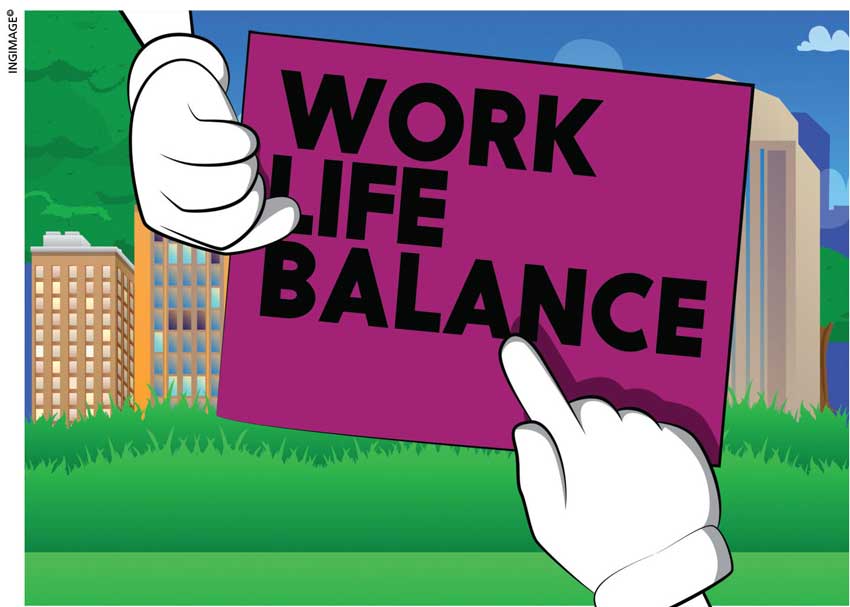WORK-LIFE BALANCE
PREVENTING WORKPLACE BURNOUT
Fazmina Imamudeen stresses the importance of achieving a work-life balance
The need to maintain a healthy equilibrium between one’s professional and personal life has long been an issue of concern. And it’s now more important than ever because people are constantly trying to balance their personal and professional lives while walking an economic tightrope.
A person is said to have achieved work-life balance when he or she can strike a healthy balance between the demands of personal life and obligations of professional life. However, this is a near impossibility these days!
One has reached a healthy work-life balance if a reasonable amount of time can be devoted to employment while finding sufficient space to take care of personal obligations and relax outside of work.
This equilibrium differs from person to person, and it doesn’t always mean splitting one’s time evenly between work and life. The ideal work-life balance should be whatever allows a person to function at his or her highest level.
There’s a correlation between an imbalance in one’s personal and professional life, and the deleterious repercussions on his or her psychological and physical health. When combined with excessive productivity, obligations can make people feel overwhelmed and drained, and push them towards fatigue and burnout.
In the wake of the COVID-19 pandemic, the WHO acknowledged burnout as a growing crisis in the workplace. The term ‘burnout’ refers to a state of physical and psychological exhaustion brought on by prolonged stress in one’s job, or performing a role that is both physically and emotionally demanding.
The term was first used in air traffic control in 1970 when an increase in collisions due to human error was believed to be the result of staff dissatisfaction – increased traffic, monotonous tasks and a subpar human-machine interface were to blame for this.
Compared to life before the pandemic, workers say they are now more likely to experience extreme stress. In the last three years, it’s become clear that we need to redefine what work-life balance entails.
During the early stages of the pandemic – when boundaries between work and home were less clear – many employees put in long and irregular hours, while also dealing with concerns about the spread of COVID-19 and the security of their families.
Due to the stressful environment in Sri Lanka at this time, efforts need to be made for working people to achieve and maintain a healthy balance between work and life. COVID-19 served as the catalyst; the economic crisis has fuelled the fire.
Sadly, the scales have begun to tip in the wrong direction. Coupled with the fact that most people work from home, this has dramatically amplified the already substantial stress brought on by their jobs.
Attitudes are beginning to shift in the wake of a possible global economic downturn and Sri Lanka’s economic crisis, which has been exacerbated by high inflation and tax hikes.
These factors have begun to change work priorities once again. Businesses and employees who work for them have been forced to battle for their survival as a result of the fragile state of the economy.
In light of the fact that burnout can be expensive for both employees and employers, organisations need to take preventative action by recognising and addressing this situation in its early stages, prior to the onset of burnout’s chronic effects.
This means providing leaders and managers with training and support, to recognise and prevent stress-related situations in the workplace. In addition, employers are responsible for enabling open conversations about stress levels at work and curtailing the stigma attached to burnout.
People tend to be more productive when they work for enterprises that prioritise independence, and enable a healthy balance between work and personal life.
Why? Because employees then have the liberty to choose when and where they work, and how they do their jobs.
Employers who place an emphasis on their employees’ personal growth and wellbeing report lower worker turnover, and are better able to fill vacancies with qualified candidates.







Leave a comment